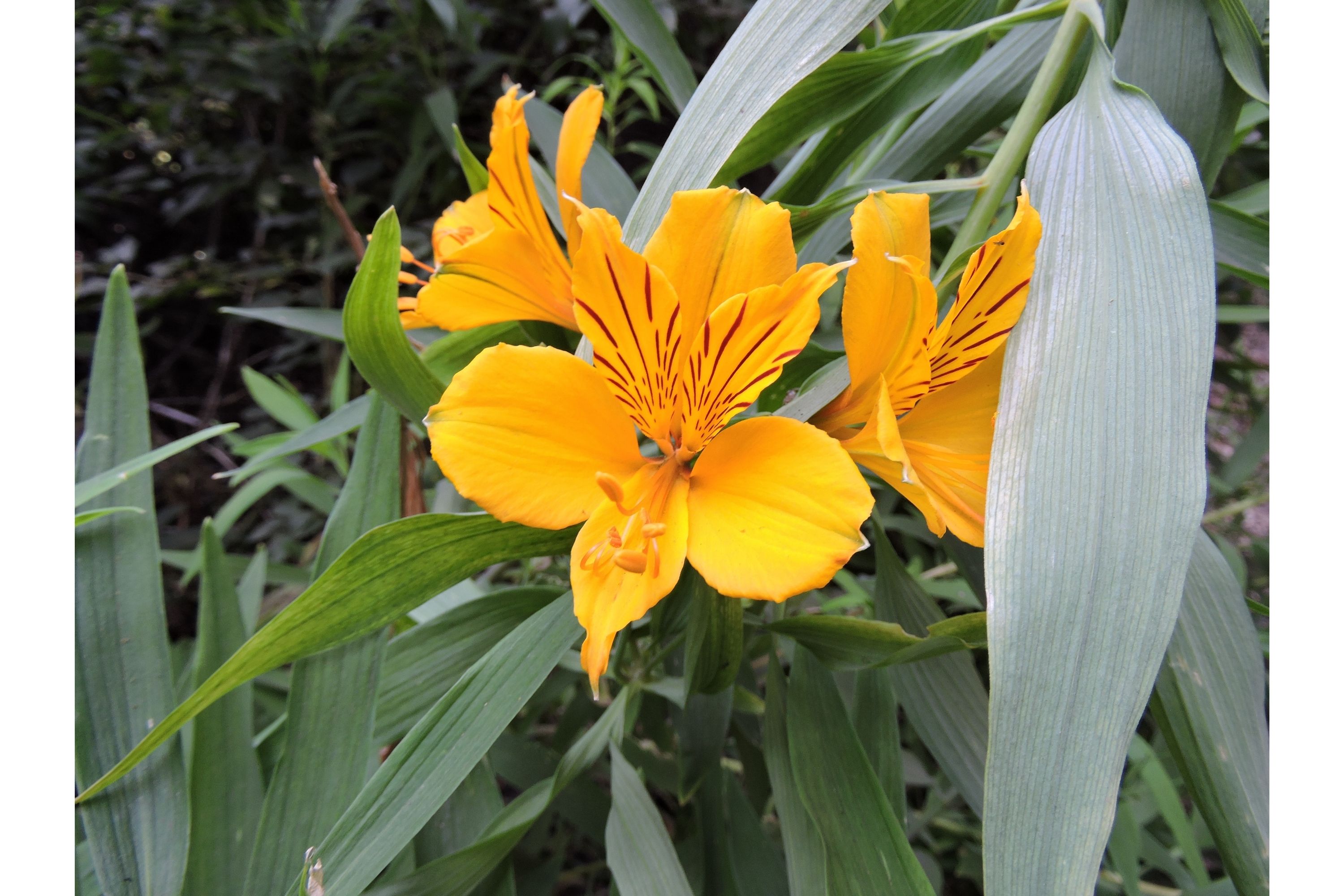Peruvian lily
(Alstroemeria aurea)

Description
Alstroemeria aurea, commonly known as the Peruvian lily or golden lily, is a perennial herbaceous plant native to South America. This beautiful plant belongs to the Alstroemeriaceae family and is prized for its striking flowers, which are characterized by brightly colored petals and unique markings. In this article, we will explore the history, biology, cultivation, and uses of Alstroemeria aurea. History Alstroemeria aurea was first discovered by Swedish botanist Clas Alströmer in 1753 during his travels to Peru. He named the plant after himself and it soon gained popularity in Europe as an ornamental plant. The plant has been cultivated for hundreds of years and is now widely distributed around the world. Biology Alstroemeria aurea is a herbaceous perennial that can grow up to 3 feet in height. The plant has a tuberous root system and produces a clump of leaves and stems. The leaves are lance-shaped and can grow up to 6 inches in length. The stems are sturdy and can support the weight of the flowers, which grow in clusters at the top of the stem. The flowers of Alstroemeria aurea are the most distinctive feature of the plant. They are trumpet-shaped and have six petals, which are brightly colored and marked with distinctive lines and spots. The petals are usually yellow, orange, or red, and the markings can be a contrasting color such as brown or purple. The flowers bloom from late spring to early fall, and each stem can produce multiple flowers. Cultivation Alstroemeria aurea is a relatively easy plant to grow and can be cultivated in a variety of settings. The plant prefers well-draining soil and requires regular watering to keep the soil moist. It can tolerate full sun or partial shade, although it may produce more flowers in a sunnier location. Propagation of Alstroemeria aurea is typically done by dividing the tubers in the fall or early spring. The tubers should be planted in a well-prepared bed with good drainage and allowed to establish before the first frost of the season. The plants should be fertilized regularly with a balanced fertilizer to promote healthy growth and flowering. Uses Alstroemeria aurea is primarily used as an ornamental plant, and its bright flowers make it a popular choice for gardens, borders, and containers. The plant is also widely used in cut flower arrangements and is prized for its long vase life and unique markings. In addition to its ornamental uses, Alstroemeria aurea has been used for medicinal purposes in South America. The plant contains several compounds that have been shown to have anti-inflammatory and anti-cancer properties, and it has been used to treat a variety of ailments including digestive problems, respiratory illnesses, and skin conditions. Conclusion Alstroemeria aurea is a beautiful and versatile plant that has been cultivated for centuries. Its distinctive flowers and easy cultivation make it a popular choice for gardens and cut flower arrangements, while its medicinal properties make it a valuable plant in traditional medicine. Whether you are a gardener, florist, or herbalist, Alstroemeria aurea is a plant that is sure to delight and inspire.
Taxonomic tree:







